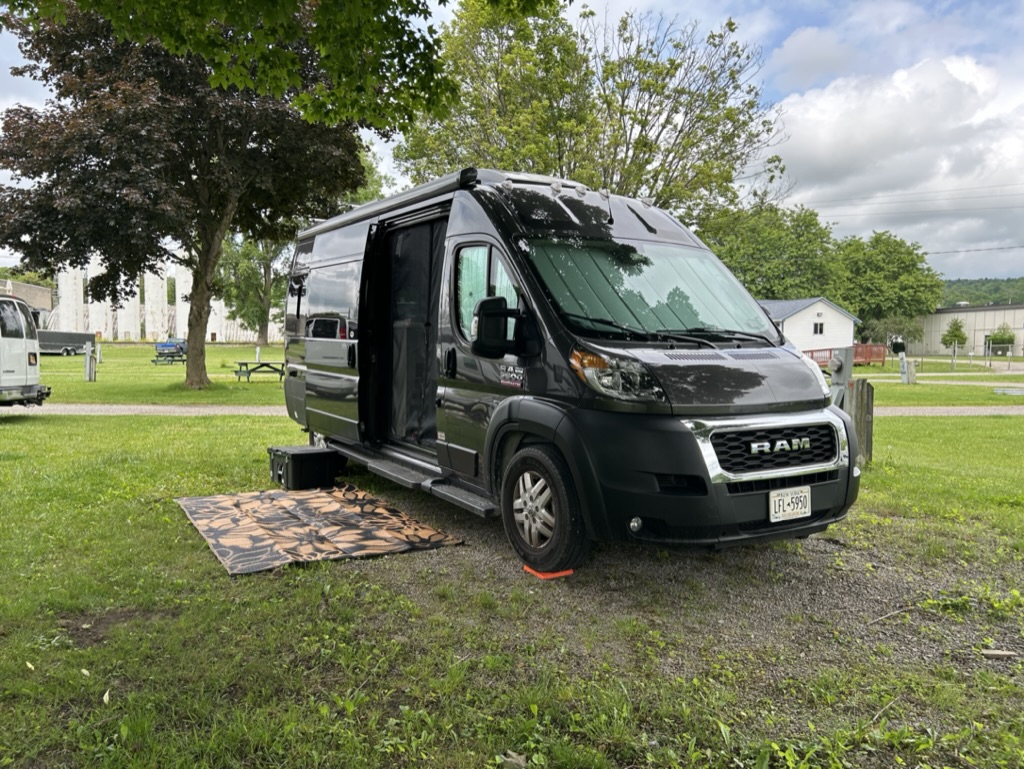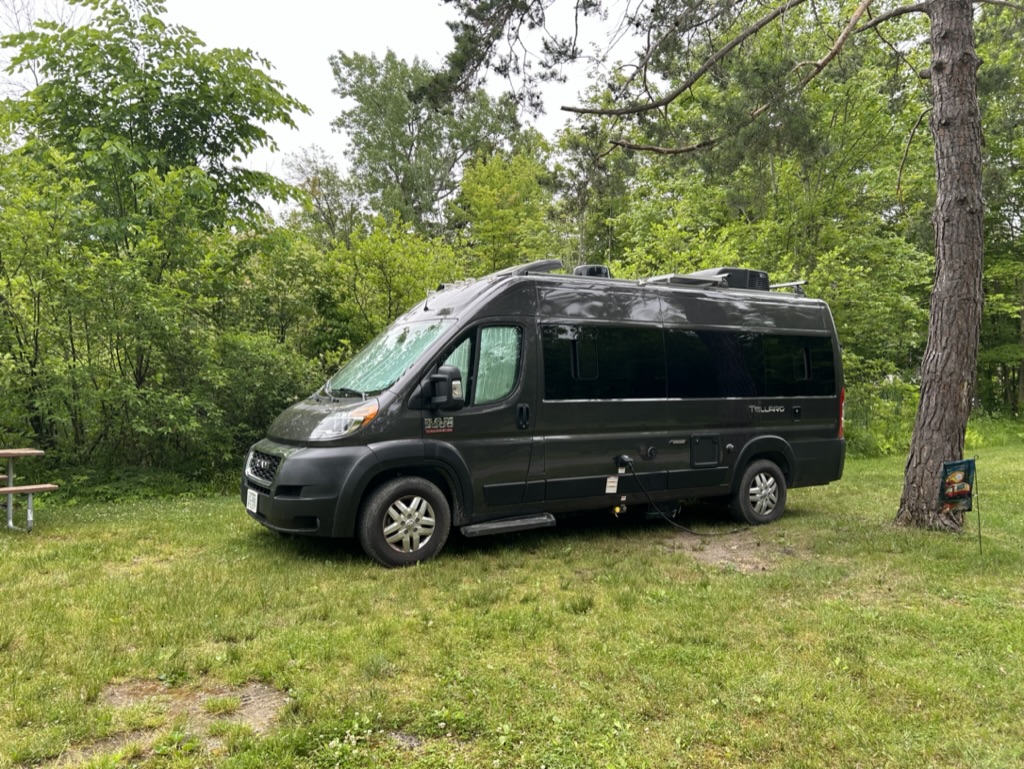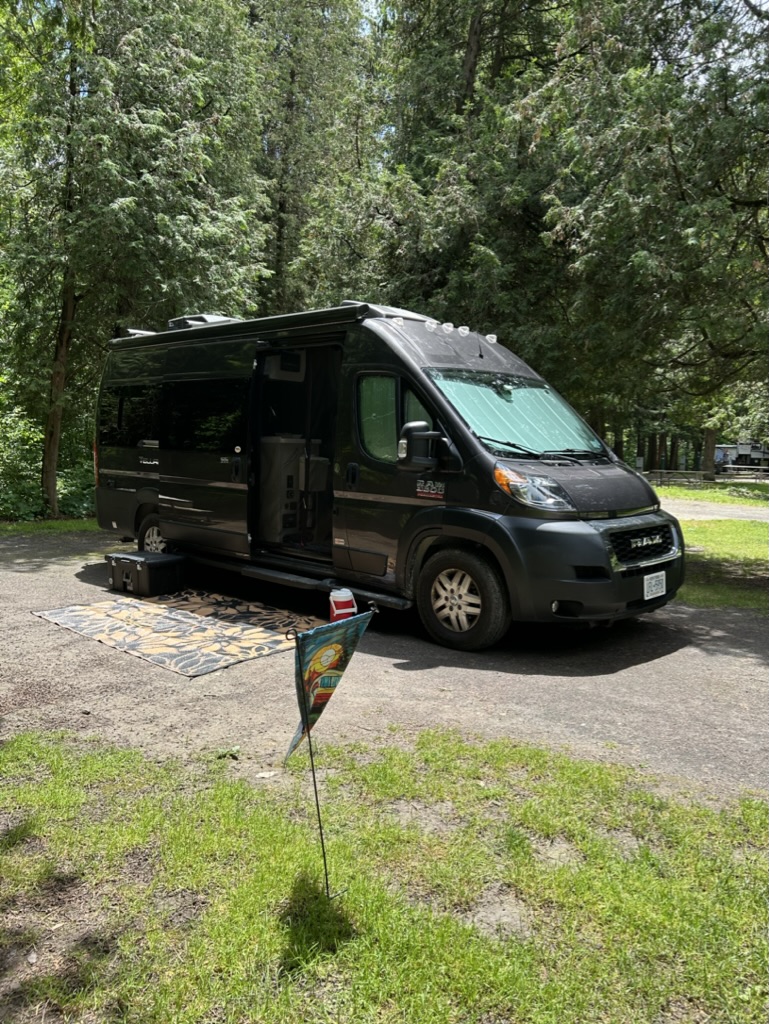St. Johnsville Marina & Campground
St. Johnsville Marina & Campground
28 Marina Dr
St Johnsville, NY 13452
518-568-7406
June 18 – 22, 2025

Our final stop for the trip was the St. Johnsville Marina and Campground, a city park in St. Johnsville, NY. I arrived at around 1 PM, after a somewhat confusing drive from Westcott Beach State Park. I planned to stop for gas after getting off the 81, about an hour into the drive, but my GPS confused me and I ended up driving around aimlessly for about 20 minutes until I stumbled across a gas station and filled up. Then, when we got to St. Johnsville, navigation stopped in the middle of town and insisted I was there, when I was next to a bank and no campground was in sight. I circled around a bit more, then gave up, pulled over, and called the campground to get final directions to the site. Talked to a very nice lady who told me where to go and met me at the gate to show me to my site. John and Jill were already there. I set up and spent the rest of the day relaxing.
The campground has only 24 sites but it’s very well-kept with plenty of amenities. Our sites had full hookups, which was nice for a change. I could dump my cassette whenever I wanted to without having to leave the site! I’d filled the tank two days before and figured it would last the rest of the trip, but if it didn’t, I had water available. We were also right on the canal, on lovely deep sites with picnic tables by the water. Only negative was that the railroad tracks ran right along the back of the campground, and there were trains running through regularly. But I kind of like the sound of trains, so it didn’t really bother me. There was also a clean spacious bathhouse with laundry.
(more…)
